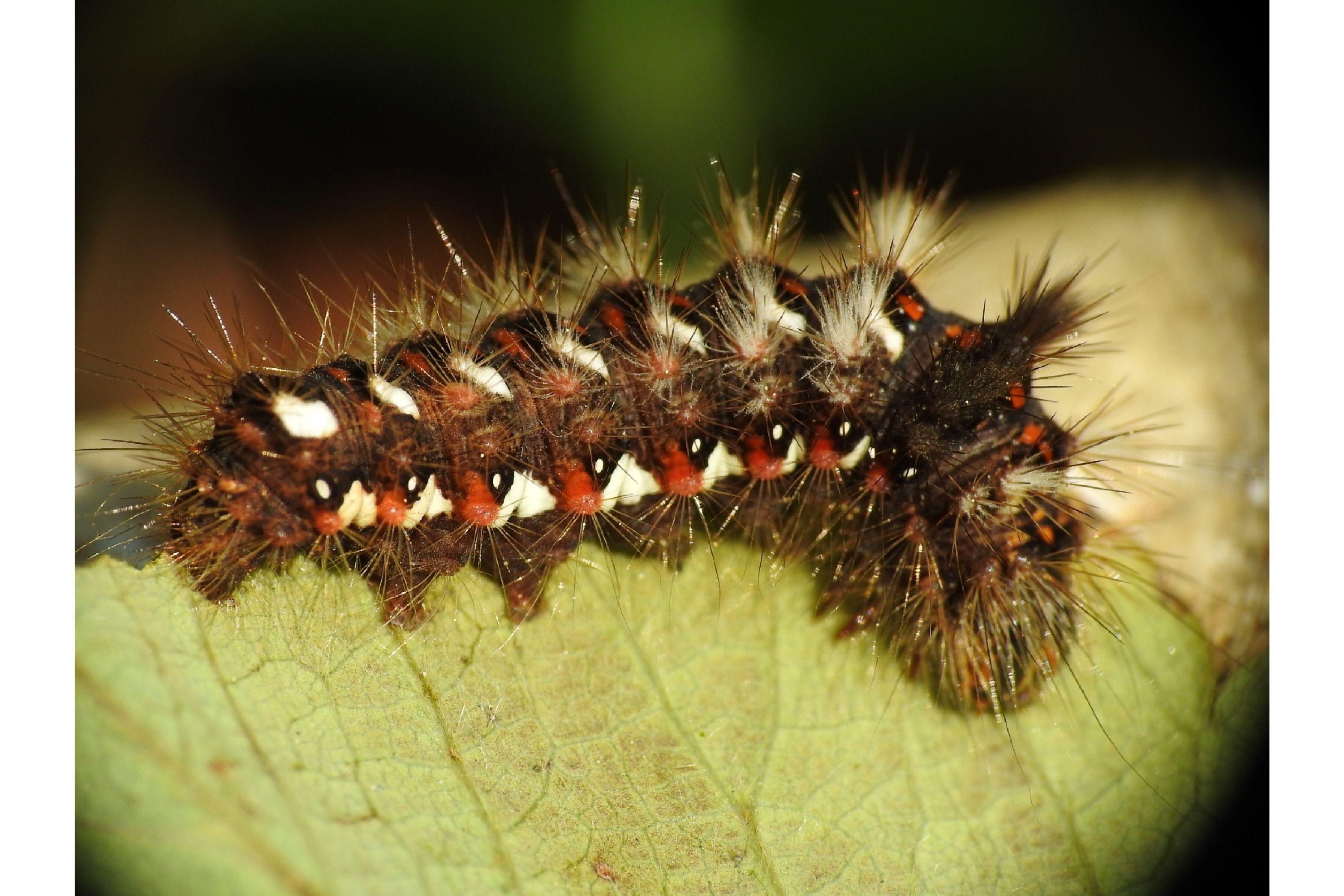Acronicta tridens
(Acronicta tridens)

Description
The dark dagger (Acronicta tridens) is a moth of the family Noctuidae. The species was first described by Michael Denis and Ignaz Schiffermüller in 1775. It is distributed throughout Europe (from southern Fennoscandia to the Balkans and Italy), Turkey, the Near East, the European part of Russia, southern Siberia, the Ural, the Russian Far East (Primorye, southern Khabarovsk, southern Amur region and Sakhalin), the Korean Peninsula, China and Japan (Hokkaido). This species has grey forewings marked with bold black "daggers". The hindwings of the males are white, those of the females dirty grey. The wingspan is 35–43 mm. Adults of this species are extremely similar to the grey dagger (Acronicta psi). Despite the common name, the dark dagger is usually the paler of the two species and the white hindwings of the male are usually diagnostic. However, the only reliable way of distinguishing adults of the two species is by examination of the genitalia. See See Townsend et al.The larvae, however, are very different (see below). This species flies at night in June and July and is attracted to light and sometimes to sugar. The larva is black, marked with red and white stripes, without the bold yellow markings and prominent horn of the larva of the grey dagger. It feeds on a variety of plants (see list below). This species overwinters as a pupa, sometimes spending two winters in this form. Acronicta is a genus of noctuid moths containing about 150 species distributed mainly in the temperate Holarctic, with some in adjacent subtropical regions. The genus was erected by Carl Linnaeus in his 1758 10th edition of Systema Naturae. Caterpillars of most Acronicta species are unmistakable, with brightly colored hairy spikes, and often feed quite visibly on common foliate trees. The hairy spikes may contain poison, which cause itchy, painful, swollen rash in humans on contact. The larva of the smeared dagger moth (A. oblinita) is unusually hairy even for this genus.Acronicta species are generally known as dagger moths, as most have one or more black dagger-shaped markings on their forewing uppersides. But some species have a conspicuous dark ring marking instead. Its eyes are naked and without eyelashes. The proboscis is fully developed. Antennae are simple in both sexes. Thorax and abdomen tuftless. Abdomen with long coarse hair on the dorsal part of proximal segments. Legs spineless. Forewings with non-crenulate cilia. Inner margin slightly lobed towards base.
Taxonomic tree:







